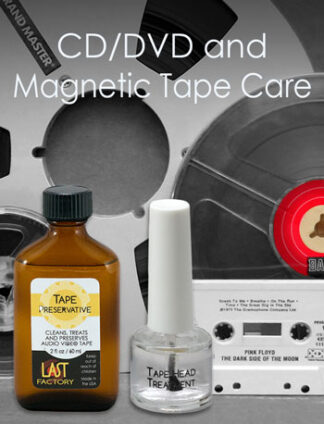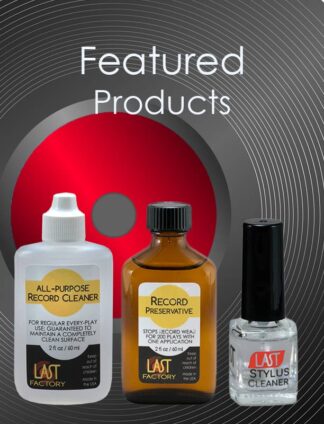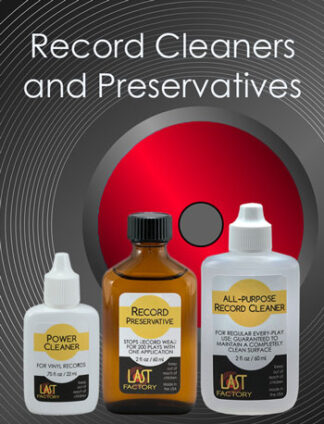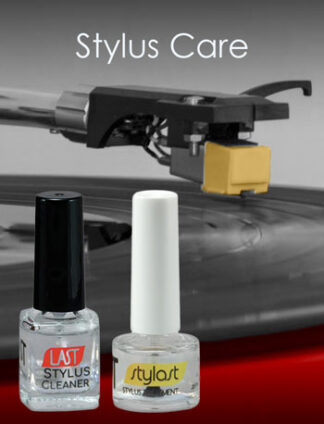Hello Walter,
[excerpted]…I have about 50 or so records damaged in a flood that have sat for years. I have has some success with rinsing off dirt, crud and moldy/mildews in the sink, and then vacuum cleaning but wanted more. That’s one big reason I am here!
I’m using a semi DIY system involving a “Vinyl Vac 33 – Vinyl Record Cleaning Kit – Record Vacuum Wand for Deep Cleaning (Attaches to Your Vacuum Hose)”. I built his system and it works well for me. I now want to incorporate your products into my routine. Any advice would be very welcome.
Kind regards, B.K.
Dear B.K., You have assembled a great system for cleaning LP records. We applaud and support your choice of equipment and process/procedures. However, you may be asking too much from flood-damaged records, especially those that suffered from mold or mildew. Why? Because mildew and especially mold can feed on one of the components in vinyl plastics. In so doing, every micro-smooth surface of the vinyl can become pitted, scarred, and granular. The end result being increased surface noise. The longer the records sit after the flood event before cleaning, the worse the damage.
Of those records that you deem worthy of your efforts, replace all sleeves, jackets – anything that was in contact with the record surface if you haven’t already done so. You have bought our most important products, and they will help the sound of the record. For the flood-damaged records, the Power Cleaner can help scrub off the mildew. Power Cleaner is normally used on brand-new records to remove the molding residue from the pressing process. But you’ll need the extra strength cleaner on your damaged records. Otherwise, the regular Record Cleaner is good for maintenance cleaning.
Don’t expect the stylus to dig out any remaining mold in the grooves. If anything, the stylus will drive it into the vinyl, so be sure you’ve cleaned it as best you can before playing it. You may find that you need to use Stylast Stylus Treatment more frequently than usual when playing the damaged records. This is because the bumpier-than-normal surface of the groove will use up the Stylast on the needle more quickly.
Best of luck with your project! Thank you for your message.
Good Listening from the folks at LAST, Walter Davies and Christine





